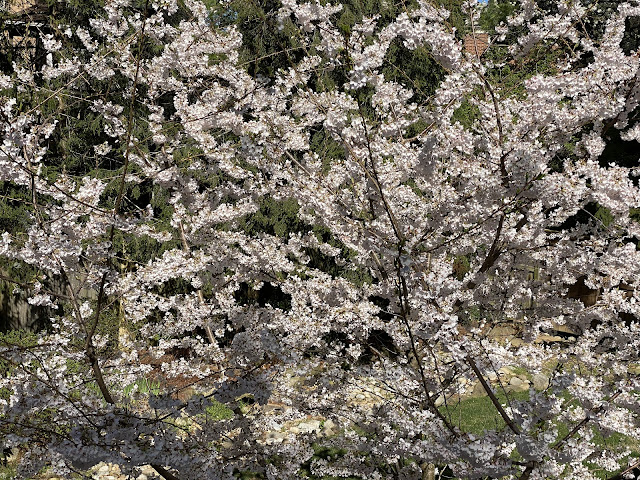This is a continuation of our story about frozen food inventory control. This time it was scallops from Great-Alaska-Seafood. These are really good scallops and we wanted to enjoy them while they were still good. Our most common and favorite way to prepare scallops is “
Hotate-no Isobe-yaki” 帆立の磯辺焼き in which the scallops are seared, seasoned with soy sauce, then wrapped in a sheet of nori. This time we tried something different. We saw an article in the Washington Post featuring 6 scallop recipes. One of them was “scallops with shallot citrus sauce”. This was perfect since we happened to have some grape fruit and oranges we’d gotten from Harry and David. So one evening we decide to make this.
To prepare the fruit is a bit of work but the this dish was really great. Nice fresh citrus flavors went well with the seared scallops.
Ingredients (2 small servings)
4 large sea scallops (we used 4 scallops for 2 servings but the standard size may be 4 diver scallops for each serving).
1 medium red grapefruit.
1 large orange
3 tablespoons olive oil, divided
1 large shallot, finely diced (about 3/4 cup)
1/2 cup dry white wine, (we used sauvignon blanc)
1 tablespoon unsalted butter
1/2 teaspoon kosher salt, divided
1/4 teaspoon freshly ground black pepper
2 teaspoons chopped fresh tarragon or basil, for serving (I used chopped fresh parsley)
Directions:
Using a sharp paring knife, trim the top and bottom off the grapefruit and the orange. Working over a bowl so the citrus segments fall into the bowl and you catch the juice, use a paring knife to remove each segment of the fruit from its membrane. Squeeze the remaining membrane over the bowl to extract more juice. Using a slotted spoon, transfer the citrus segments to a separate bowl; reserve the juice.
In a medium saucepan over medium heat, heat 1 tablespoon of the oil until shimmering. Add the shallots and cook, stirring, until they soften slightly, about 2 minutes. Add the wine, increase the heat to medium-high and bring to a boil. Cook until the wine is reduced by about half, about 2 minutes. Add the reserved citrus juice and cook until the liquid in the pan has reduced slightly, 1 to 2 minutes more. Stir in the butter and 1/4 teaspoon of the salt, then remove from the heat and cover to keep warm.
Pat the scallops all over with paper towels to ensure they are as dry as possible, then sprinkle with the remaining 1/4 teaspoon of salt and pepper. Heat the remaining oil in a large skillet over high heat, until shimmering. Add the scallops and cook, without moving them, until caramelized and brown on the bottom, 2 to 3 minutes. Gently flip, and cook on the other side until the scallops are only slightly translucent in the center, 2 to 3 minutes more.
While the scallops are cooking, add the citrus segments to the sauce, stirring gently so they don’t break up much; return the sauce to low heat until warmed through.
Evenly divide up the scallops per serving and place on the plates. Pour about 1/3 cup of sauce on top, and sprinkle with the herbs. Serve warm.
We had this with freshly cooked rice mainly because we were running short of frozen rice (which is very convenient to have on hand). The citrus sauce went remarkably well with the rice. We ended up pouring all the available sauce on the rice and even supplementing the dish with more fresh rice. We do not always have grapefruit and oranges on hand but when we do this is a great way to serve scallops.

























